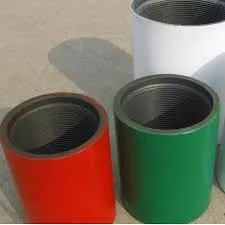- Afrikaans
- Albanian
- Amharic
- Arabic
- Armenian
- Azerbaijani
- Basque
- Belarusian
- Bengali
- Bosnian
- Bulgarian
- Catalan
- Cebuano
- Corsican
- Croatian
- Czech
- Danish
- Dutch
- English
- Esperanto
- Estonian
- Finnish
- French
- Frisian
- Galician
- Georgian
- German
- Greek
- Gujarati
- Haitian Creole
- hausa
- hawaiian
- Hebrew
- Hindi
- Miao
- Hungarian
- Icelandic
- igbo
- Indonesian
- irish
- Italian
- Japanese
- Javanese
- Kannada
- kazakh
- Khmer
- Rwandese
- Korean
- Kurdish
- Kyrgyz
- Lao
- Latin
- Latvian
- Lithuanian
- Luxembourgish
- Macedonian
- Malgashi
- Malay
- Malayalam
- Maltese
- Maori
- Marathi
- Mongolian
- Myanmar
- Nepali
- Norwegian
- Norwegian
- Occitan
- Pashto
- Persian
- Polish
- Portuguese
- Punjabi
- Romanian
- Russian
- Samoan
- Scottish Gaelic
- Serbian
- Sesotho
- Shona
- Sindhi
- Sinhala
- Slovak
- Slovenian
- Somali
- Spanish
- Sundanese
- Swahili
- Swedish
- Tagalog
- Tajik
- Tamil
- Tatar
- Telugu
- Thai
- Turkish
- Turkmen
- Ukrainian
- Urdu
- Uighur
- Uzbek
- Vietnamese
- Welsh
- Bantu
- Yiddish
- Yoruba
- Zulu
casing coupling dimensions
Casing Coupling Dimensions An Overview
Casing coupling dimensions play a crucial role in the oil and gas industry, particularly in well construction and completion processes. Understanding these dimensions ensures the effective connection between casing pipes, which are essential for maintaining well integrity and providing a conduit for the extraction of hydrocarbons. This article delves into the key aspects of casing couplings, including their dimensions, types, and their significance in drilling operations.
Casing is typically a series of pipe segments inserted into a drilled borehole. Couplings are short pieces of pipe used to connect two sections of casing, facilitating a secure and pressure-tight joint between them. The dimensions of these couplings are critical because they need to match the outer diameter (OD) and wall thickness of the casing pipes they connect. These dimensions are standardized under various specifications, with the most common being API (American Petroleum Institute) standards.
The dimensions of casing couplings can vary based on the casing size, typically measured in inches. For instance, common sizes range from 4-1/2 inches to 20 inches in OD, with specific wall thicknesses designed to withstand internal pressures and external stresses encountered during drilling operations. The couplings themselves are generally manufactured in various classes, such as regular, heavy, and extra-heavy, which refer to their wall thickness and strength characteristics.
casing coupling dimensions

In addition to OD and wall thickness, the length of the coupling is also an important dimension. Standard lengths usually range from 6 to 12 inches, although custom lengths can be specified to meet specific project requirements. Proper selection of coupling dimensions ensures compatibility with casing and helps prevent issues such as leaking or joint failure, which can result in costly delays and safety hazards.
Moreover, the material used in fabricating casing couplings is vital. Most couplings are made from carbon steel, which provides the necessary strength to endure harsh downhole conditions. Advanced materials and coatings may also be utilized to enhance corrosion resistance, especially in environments where sour gas or saline water is present.
The significance of accurate casing coupling dimensions extends beyond mere physical compatibility. Properly dimensioned couplings contribute to the overall efficiency of the drilling process. They help maintain wellbore stability, reduce the risk of blowouts, and ensure that the casing can withstand the mechanical and thermal stresses encountered during operation.
In conclusion, casing coupling dimensions are a fundamental aspect of well construction in the oil and gas industry. Their proper specification and understanding are essential for ensuring safe and efficient drilling operations. As technology evolves and drilling techniques advance, continued focus on the dimensions and standards of casing couplings will be imperative to support the ever-increasing demands of hydrocarbon extraction. Understanding these factors not only aids engineers and operators in making informed decisions but also contributes to the sustainability and safety of drilling activities worldwide.
-
Tubing Pup Joints: Essential Components for Oil and Gas OperationsNewsJul.10,2025
-
Pup Joints: Essential Components for Reliable Drilling OperationsNewsJul.10,2025
-
Pipe Couplings: Connecting Your World EfficientlyNewsJul.10,2025
-
Mastering Oilfield Operations with Quality Tubing and CasingNewsJul.10,2025
-
High-Quality Casing Couplings for Every NeedNewsJul.10,2025
-
Boost Your Drilling Efficiency with Premium Crossover Tools & Seating NipplesNewsJul.10,2025







